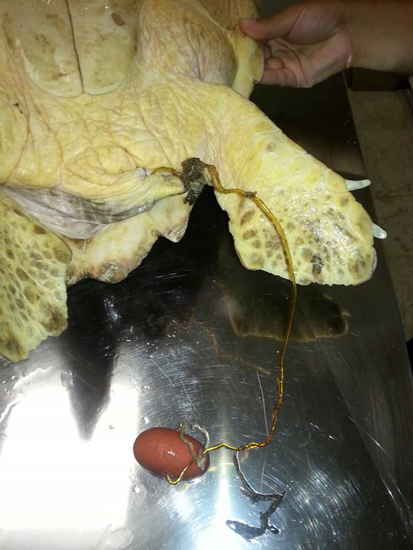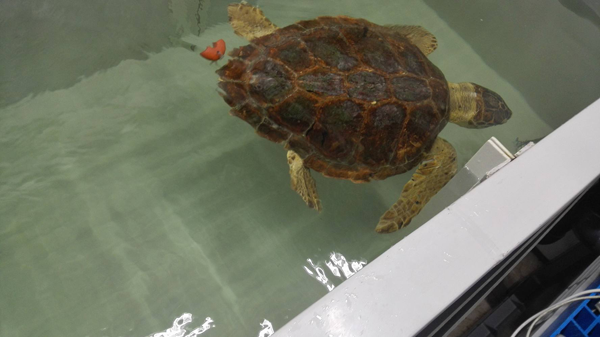Editorial
Volume 1 Issue 2 - 2017
Use of Fishing Float in Case of Fishing Lines Without Hook Trailing from Cloaca in Sea Turtles
1Centro Veterinario per Animali Esotici, Palermo, IT
2Ambulatorio Veterinario Arena-Ostino, Carini (PA), IT, Sea Turtles First Aid Center of Egadi Islands Marine Protected Area, Favignana (TP), IT
3Sea Turtles First Aid Center of Egadi Islands Marine Protected Area, Favignana (TP), IT
4Egadi Islands Marine Protected Area (Director), Favignana (TP), IT
5Sea Turtles First Aid Center of Egadi Islands Marine Protected Area, Favignana (TP), IT
2Ambulatorio Veterinario Arena-Ostino, Carini (PA), IT, Sea Turtles First Aid Center of Egadi Islands Marine Protected Area, Favignana (TP), IT
3Sea Turtles First Aid Center of Egadi Islands Marine Protected Area, Favignana (TP), IT
4Egadi Islands Marine Protected Area (Director), Favignana (TP), IT
5Sea Turtles First Aid Center of Egadi Islands Marine Protected Area, Favignana (TP), IT
*Corresponding Author: Di Giuseppe Marco DVM, PhD, GPCert (ExAP), Centro Veterinario per Animali Esotici, Palermo, IT.
Received: April 23, 2017; Published: May 09, 2017
Fishing lines protruding from cloaca are often found in rescued sea turtles (McArthur, 2004).
Although fishing lines alone can themselves produce necrotizing lesions of the intestine lumen (Di Bello., et al. 2016; Di Bello., et al. 2013), If the hook is not present on radiographs and there is no evidence of constipation, a conservative treatment could be taken in consideration instead of a surgical approach.
The use of mineral oil per os helps the progression of the fishing lines without hook inside the intestines (McArthur, 2004; Wineken., et al. 2005 ).
Moreover the authors have found useful to connect the end of the fishing line to a fishing float to achieve a slight and regular traction force helping to discharge the fishing line. Different size of fishing float can be used depending on the traction force you want to apply. The fishing float has to be connected approximately at 20 cm from the cloaca in order to not interfere with defecation and rear flippers movements (Figure 1). Moreover the turtle can be able to completely submerge and freely swim with this device attached (Figure 2). Authors have noticed that when the fishing float is too big and consequently the traction force applied is too much, turtles’ appetite decreases.

Figure 1: Particular of the fishing float attached to the fishing line
protruding from the cloaca of loggerhead turtle
You can value the progression of the fishing line measuring the length of the fishing line protruding from the cloaca. Ultrasound and cloacoscopy can help to monitor the presence of lesions in the intestines in the meanwhile. With this method authors have succeeded most of the time to expel all the fishing lines from cloaca without hook in sea turtles rescued. This conservative approach should be taken in consideration whenever possible in authors’ opinion.
Acknowledgments
The Sea Turtles First Aid Center of Favignana (TP) is managed by the Marine Protected Area Egadi islands in cooperation with environmental associations WWF Italia onlus and Legambiente onlus. It was established thanks to grants from Ministry of the Environment, Federparchi-Fondo per la Biodiversità, Riomare and thanks to income of Marine Protected Area. This first aid sea turtles Center thanks to grants from the European Project Tartalife will become a Sea Turtles Rescued Center by 2018.
The Sea Turtles First Aid Center of Favignana (TP) is managed by the Marine Protected Area Egadi islands in cooperation with environmental associations WWF Italia onlus and Legambiente onlus. It was established thanks to grants from Ministry of the Environment, Federparchi-Fondo per la Biodiversità, Riomare and thanks to income of Marine Protected Area. This first aid sea turtles Center thanks to grants from the European Project Tartalife will become a Sea Turtles Rescued Center by 2018.
References
- Di Bello A., et al. “Surgical approach to the coelomic cavity through the axillary and inguinal regions in sea turtles”. Journal of American Veterinary Medicine Association 228.6 (2006): 922-925.
- Di Bello A., et al. “Surgical treatment of injuries caused by fishing gear in the intracoelomic digestive tract of sea turtles”. Disease of Aquatic Organims 106.2 (2013): 93-102.
- McArthur S., et al. “Problem-solving approach to conditions of marine turtles. In: Medicine and Surgery of Tortoises and Turtles”. Blackwell Publishing, Oxford (2004): 301-307.
- Mader DR., et al. “Medical care of Seaturtle. In: Reptile Medicine ad Surgery 2 ed”. Elsevier (2005): 972-1007.
Citation:
Di Giuseppe Marco., et al. “Use of Fishing Float in Case of Fishing Lines Without Hook Trailing from Cloaca in Sea Turtles”. Multidisciplinary
Advances in Veterinary Science 1.2 (2017): 48-49.
Copyright: © 2017 Di Giuseppe Marco., et al. This is an open-access article distributed under the terms of the Creative Commons Attribution License, which permits unrestricted use, distribution, and reproduction in any medium, provided the original author and source are credited.






























 Scientia Ricerca is licensed and content of this site is available under a Creative Commons Attribution 4.0 International License.
Scientia Ricerca is licensed and content of this site is available under a Creative Commons Attribution 4.0 International License.